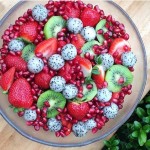There are so many different diets out there that it can feel like they all must be the right one, right? Well, no. As much as some of them may have some positive effects on your health, most restrictive diets can be dangerous if done without a proper understanding of their implications and limitations. In addition to that, there is no “superfood” that will magically help you lose weight or cure any disease. The old saying “you cannot eat your way to good health” holds true for almost any diet plan. The key is balance: eating healthy foods in reasonable quantities alongside an abundance of other healthy options from a variety of sources. That being said, here is a list of healthy foods you should try adding to your diet.
Leafy Greens
Some people get scared off by the word “vegetables”, and yet, leafy greens are essential for a healthy diet. Most greens are low in calories and rich in nutrients, especially vitamins K and A. They also contain fiber and minerals such as iron, calcium, and magnesium. Blending or juicing your greens is a great way to add them to your diet if you are not a fan of eating them by themselves. If you prefer to eat your greens, you can add them to salads, sandwiches, omelets, smoothies, or even soups. Fresh or frozen greens are preferable to canned ones.
Fruit
Much like vegetables, most fruits are rich in vitamins and minerals, and low in calories. In general, most fruits are a healthy source of carbohydrates, as long as you eat reasonable quantities. Fruit is also a great source of fiber, which can help you feel full for longer. Fruit is best eaten fresh, but dried fruits are also a good choice. Avoid canned fruits unless you are treating yourself to a Hawaiian luau. To avoid an excess of sugar, try to eat fruits with a low glycemic index (GI), such as berries, apples, grapefruit, pears, kiwis, and peaches. Fruit is great as a snack, dessert, or part of a meal. You can also blend it for a healthy smoothie!
Beans and Legumes
Beans and legumes are packed with protein and fibre, and are low in fat. They can be eaten whole or in the form of flour or protein powder. Beans can be used in a variety of dishes, and they are great substitutions for meat due to their high protein content. Many of the nutrients in beans are lost when they are exposed to high temperatures. To avoid this, you can add them to salads, sandwiches, or eat them cold. Beans are a staple in many healthy diets, and you can add them to soups, stews, salads, baked goods, or stir-fries.
Whole Grains
Whole grains include things like oats, quinoa, barley, and brown rice. They are very rich in fibre, which helps with digestion, blood sugar regulation, and weight control. Grains are also packed with B vitamins, iron, and magnesium. Despite their nutritional profile, whole grains are often overlooked as a healthy diet choice, as they have become synonymous with dieting. While desserts and pastas made with whole grains are often deemed as diet foods, regular whole grain foods, such as oatmeal and brown rice, are also very healthy. You can eat whole grains as porridge, in baked goods, or in the form of rice and pasta.
Nuts and Seeds
Nuts and seeds are packed with nutrients and healthy fats. They are high in protein and fibre and contain a variety of minerals and vitamins, such as magnesium, iron, and vitamin E. Nuts are best eaten in moderation due to their high calorie content, but they are a great snack option for those who need additional protein. About two tablespoons of nuts per day is enough to reap their health benefits. You can add nuts to salads, baked goods, or smoothies, or eat them as a snack. Nuts are also great to sprinkle on top of other dishes, such as soups and salads, to add flavour and texture.
Healthy Fats
Healthy fats include avocado, olive oil, peanut butter, and coconut oil. They are essential for good health, as they contain essential fatty acids that are not produced by the body. Fats help with hormone regulation, assist in the absorption of nutrients, and contribute to healthy skin and hair. Of course, you don’t have to consume these fats in their pure form. In fact, it’s best if you mix things up. You can add some healthy fats to your meals by drizzling olive oil on your salad, adding peanut butter to your oats, or sprinkling some crushed peanuts on your baked goods.
Conclusion
There are so many different diets out there that it can feel like they all must be the right one, right? Well, no. As much as some of them may have some positive effects on your health, most restrictive diets can be dangerous if done without a proper understanding of their implications and limitations. In addition to that, there is no “superfood” that will magically help you lose weight or cure any disease. The old saying “you cannot eat your way to good health” holds true for almost any diet plan. The key is balance: eating healthy foods in reasonable quantities alongside an abundance of other healthy options from a variety of sources. Now that you know what healthy foods to add to your diet, make sure to keep them in proper perspective. They don’t need to be the focal point of every meal, and you don’t have to go nuts with them.



You must be logged in to post a comment.